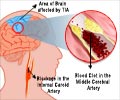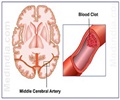A new study says that chronic stroke patients can be rehabilitated with a novel, hand-operated robotic device along with functional MRI (fMRI).
Using a novel, hand-operated robotic device along with functional MRI (fMRI), scientists have found that chronic stroke patients can be rehabilitated, says a new study.
This is the first study using fMRI to map the brain in order to track stroke rehabilitation.We have shown that the brain has the ability to regain function through rehabilitative exercises following a stroke. We have learned that the brain is malleable, even six months or more after a stroke, which is a longer period of time than previously thought, said A. Aria Tzika, Ph.D., director of the NMR Surgical Laboratory at Massachusetts General Hospital (MGH).
Earlier, the researchers thought that there was only a short window of three to six months following a stroke when rehabilitation could make an improvement.
Our research is important because 65 percent of people who have a stroke affecting hand use are still unable to incorporate the affected hand into their daily activities after six months, said Tzika.
The researchers wanted to know if stroke rehabilitation after six months could be possible.
Thus, they studied five right-hand dominant patients who had strokes at least six months prior that affected the left side of the brain and, consequently, use of the right hand.
Advertisement
fMRI measures the tiny changes in blood oxygenation level that occur when a part of the brain is active.
Advertisement
Also, the increased cortical activation persisted in the stroke patients who had exercised during the training period but then stopped for several months.
These findings should give hope to people who have had strokes, their families and the rehabilitative specialists who treat them, said Tzika.
The findings of the study were presented at the annual meeting of the Radiological Society of North America (RSNA). (ANI)
Source-ANI
SPH















